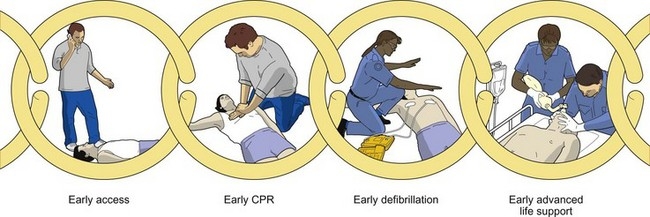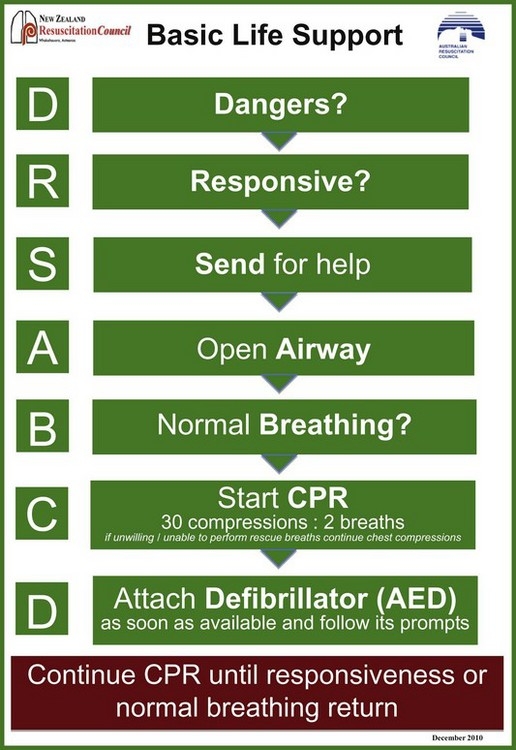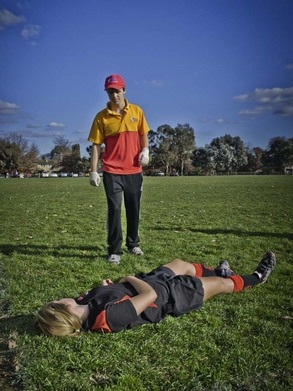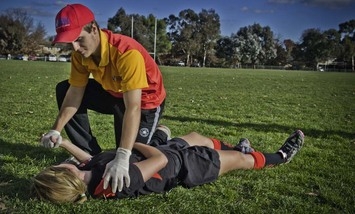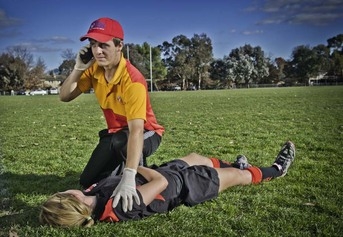Chapter Six Principles of injury management
Introduction
The basic principles of injury management that sports trainers should be guided by are:
 Before acting, check for potential danger to yourself as well as to other athletes and bystanders. Continue to reassess the situation and ensure your continued safety as well as that of other athletes and bystanders.
Before acting, check for potential danger to yourself as well as to other athletes and bystanders. Continue to reassess the situation and ensure your continued safety as well as that of other athletes and bystanders.
 Rapidly assess the situation, including noting what has happened, how many athletes are involved and their general condition.
Rapidly assess the situation, including noting what has happened, how many athletes are involved and their general condition.
 Call for help as soon as it is possible and safe to do so.
Call for help as soon as it is possible and safe to do so.
 Assess the response of each athlete – unconscious athletes have priority of care.
Assess the response of each athlete – unconscious athletes have priority of care.
 Unless the condition is minor, or there is imminent danger, do not move the athlete. If an athlete must be moved, immobilise suspected fractures beforehand if it is possible.
Unless the condition is minor, or there is imminent danger, do not move the athlete. If an athlete must be moved, immobilise suspected fractures beforehand if it is possible.
 If the accident was not witnessed, treat the athlete as if they have sustained a spinal injury and immobilise them appropriately.
If the accident was not witnessed, treat the athlete as if they have sustained a spinal injury and immobilise them appropriately.
 An unconscious person who is breathing should be placed on their side (lateral position) to avoid choking and should be moved, if necessary, in this same position.
An unconscious person who is breathing should be placed on their side (lateral position) to avoid choking and should be moved, if necessary, in this same position.
 When carrying an athlete on a stretcher, ensure all movements are as smooth as possible and that the stretcher remains horizontal.
When carrying an athlete on a stretcher, ensure all movements are as smooth as possible and that the stretcher remains horizontal.
 Explain to the athlete everything that is being done and continue to reassure them to minimise fear and improve cooperation.
Explain to the athlete everything that is being done and continue to reassure them to minimise fear and improve cooperation.
Chain of survival
 Early access – call emergency services for help as soon as possible and get to the athlete to provide immediate assistance. This is sometimes referred to instead as early recognition.
Early access – call emergency services for help as soon as possible and get to the athlete to provide immediate assistance. This is sometimes referred to instead as early recognition.
 Early cardiopulmonary resuscitation (CPR) – effective CPR can maintain cardiac output and provide oxygen to the brain.
Early cardiopulmonary resuscitation (CPR) – effective CPR can maintain cardiac output and provide oxygen to the brain.
 Early defibrillation – defibrillation to restore normal heart function is applied as soon as possible.
Early defibrillation – defibrillation to restore normal heart function is applied as soon as possible.
 Early advanced life support – trained personnel, such as doctors or paramedics, apply interventions such as medication, artificial airways or ventilation.
Early advanced life support – trained personnel, such as doctors or paramedics, apply interventions such as medication, artificial airways or ventilation.
DRSABCD principles
| D | Dangers? |
| R | Responsive? |
| S | Send for help |
| A | Open Airway |
| B | Normal Breathing? |
| C | Start CPR |
| D | Attach Defibrillator |
Responsive?
| C | Can you hear me? |
| O | Open your eyes |
| W | What is your name? |
| S | Squeeze my hand |
While assessing whether they are responsive, be careful not to move the athlete’s neck.
